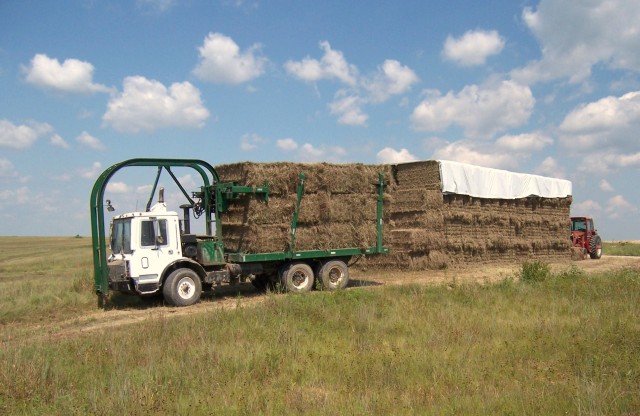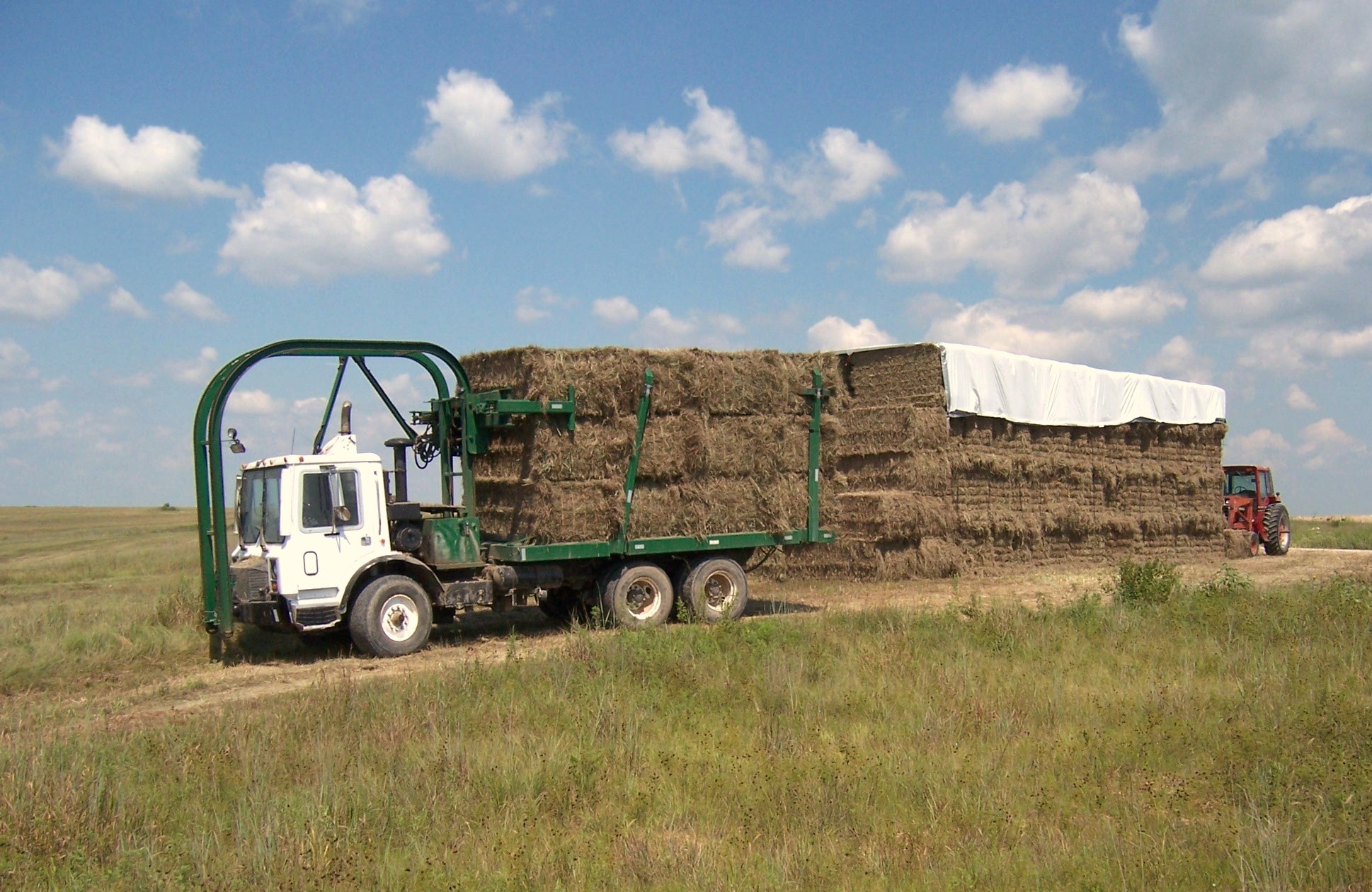FORT RILEY, Kan. - Swathers and balers have become a common site around the Fort Riley area the past few months. Those behind these machines are farmers who have leased various areas of land around the installation under the Agricultural Outlease Program to bale hay - a program that is saving Fort Riley money and resources while benefiting the local community.
More than 30,000 acres of land is available for hay leases spread around the installation, primarily along the edges of post.
"We use the hay leases as a management tool for natural resources primarily," said Jerold Spohn, agronomist - agricultural outlease coordinator with the Conservation Branch of the Directorate of Public Works. "It helps reduce some of the excess liter in the areas; it may actually reduce the number of times we have to burn an area in a 10-year period; it also reduces the potential of wildfires for military training."
In 2010, two special hay contracts also were awarded to help reduce the amount of mowing being done by DPW's roads and grounds branch. The first special contract was at Marshall Army Airfield. The contractor provided 30 tons of the hay cut to the Commanding General's Mounted Color Guard.
"(This) was another savings. We saved by not having to cut that grass, but we also saved the Commanding General's Mounted Color Guard money by not having to purchase 30 tons of hay," Spohn said.
The other was a contract to have a person bale hay on Main Post.
"We were also able to put together a small purchase to have a person hay the areas around Riley's Conference Center for probably less than one percent of the cost of what it would take to maintain the mowing, and, in turn, the contractor was able to keep and dispose of all the hay off it as he saw fit," Spohn said.
These hay leases also save the installation money by reducing the wildfire potential, and if there is a fire it gives the military a safe place to go with their equipment that the fire won't get through as quickly allowing fire and emergency services to respond.
Along with protecting military assets the cutting also helps reduce the chance of a wildfire from going off the installation by having the mowed areas close to the perimeter thereby protecting neighboring communities.
A majority of the areas are leased for warm-season grass, which is cut between July 15 and Aug. 15 each year with a deadline of Sept. 10 to remove hay bales.
"We do have two leases that include a cool-season portion - primarily brome grass - and in those two sections they've got some special cutting dates that they can actually come in and actually harvest it twice - once earlier in the year and once later in the year, and those are primarily in the Cantonment area along Huebner Road and McCormick Road," Spohn said.
By haying a benefit also exists for the natural resources by keeping the brush down and noxious weeds in check.
Fort Riley, therefore, may not have to do as much maintenance in terms of clipping off brush and trees, trying to spray them with a chemical and spraying the noxious weeds, Spohn said.
These contracts benefit the community by providing additional locations for farmers to come in and cut hay, Spohn said.
Areas blocked off for leases range from 900 to 4,300 acres, however, only 10 to 15 percent is expected to be harvestable due to ravines, natural forested areas and other factors. Land used as firebreaks around the exterior of the installation also are leased out to local farmers as crop land.
"(Firebreaks) serve as a break between public and the government, provides a place for us to go to stop a fire because we are only allowed crops in there that are not fire tolerant," Spohn said.
Crops planted in these areas are primarily milo or grain sorghum and soybeans. Some farmers plant corn or sunflowers and in special circumstance about 50 percent can be planted to wheat.
"As a natural resources management tool the lessees are required to leave us eight rows of standing grain every fall during harvest for winter food for the wildlife," Spohn said.
By leasing this land out the installation saves about $200,000 a year in labor alone from having to go out and disk or maintain.
This program is operated with non-tax payer money with all revenue received going to maintain the leases and to fund additional resources projects.
In 2010, Fort Riley received $50,000 from the program, which is less than a normal year, when Spohn said Fort Riley receives between $85,000 and $90,000.
These funds are used to maintain firebreaks, improve access to the firebreak fields and other general resources.
December will mark the end of a five-year lease cycle for both hay and firebreak contracts. DPW's conservation branch is working with the Kansas City District U.S. Army Corps of Engineers to release most of the areas for another five years.
Parties interested in leasing land either for hay or firebreaks are asked to provide their name and contact information to the DPW environmental division office by the middle of October.


Social Sharing